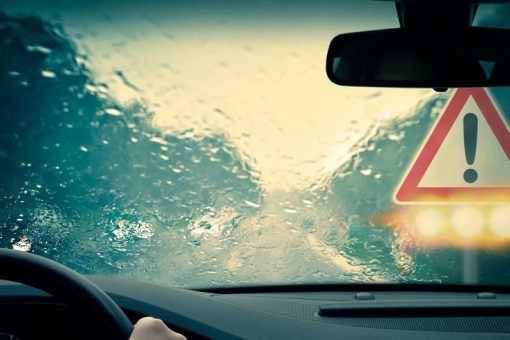Summer weather is just around the corner and with it come thunderstorms that can terrify your dog. We have asked experts what are the causes of this anxiety and the solutions they propose to calm them on stormy days.
Symptoms of anxiety in dogs are “ears back, tails down, lip licking while panting and yawning,” says Terry Curtis, a clinical behavior analyst at the University of Florida College of Veterinary Medicine.
Sometimes during a thunderstorm, your panic escalates to dangerous levels. “I’ve seen cases where the dog has excavated walls down to the drywall,” says Curtis. “Another dog jumped through a sliding glass door.”
But what exactly happens to them?
Electrified
The drop in barometric pressure — something dogs can feel — coupled with the darkening of the sky, wind, and the noise of thunder can cause fear reactions in dogs.
Some dogs have an aversion to noise, which can make them feel uncomfortable or even panic at loud sounds.
Static electricity buildup in their fur is another likely explanation, according to Nicholas Dodman, a veterinary behavior analyst at Tufts University and scientific director of the Center for Canine Behavior Studies.
Large dogs and those with long or double coats easily accumulate static electricity, just like we do when we wear a sweater and the car door gives us a shock if we do not wear shoes with rubber soles.
An already nervous dog during storms can shock himself by touching a metal object with his nose. According to Dodman, this mild discomfort can escalate into a phobia.

Kelly Ballyntyne, an adjunct clinical professor at the University of Illinois College of Veterinary Medicine, says it is difficult to test whether the build-up of static electricity causes anxiety in dogs.
Our pets’ amazing noses can “just smell changes in the environment that herald the arrival of a storm,” she explains.
Furthermore, “there is some evidence that there are some genetic predispositions for animals to develop noise phobia”, as in border collies and Australian Shepherds.
How to calm your dog
When treating storm-phobic dogs, Dodman found that many canids look for places to hide and protect themselves from electrical shocks, such as bathtubs, hot tubs, or behind flushes.
This unusual behavior piqued her curiosity and she began informally asking the owners where their dogs were hiding, with half of them saying in the bathroom. A 36-kilogram German shepherd even jumped into the sink, she says.
Curtis and Dodman advised owners to purchase an antistatic jacket to keep the dog calm, and Dodman adds that scrubbing them with an antistatic cleaner also helps. Comfortable coats can also be comforting.
Ballyntyne suggests that dog owners videotape their pet when they are not at home to look for signs such as panting or fidgeting. These behaviors could reveal mild separation anxiety that is exacerbated by storms.
She also recommends letting the animal decide where it feels safe, and then adapting the area to make it more comfortable by adding white noise machines – to muffle the noise of thunder – or soundproofing tiles.
All experts agree that a vet can prescribe medication if necessary.
“If the dog is terrified, anti-anxiety medication will go a long way toward improving the dog’s quality of life,” says Ballyntyne.






